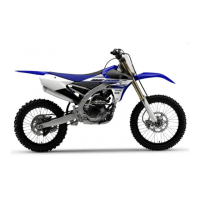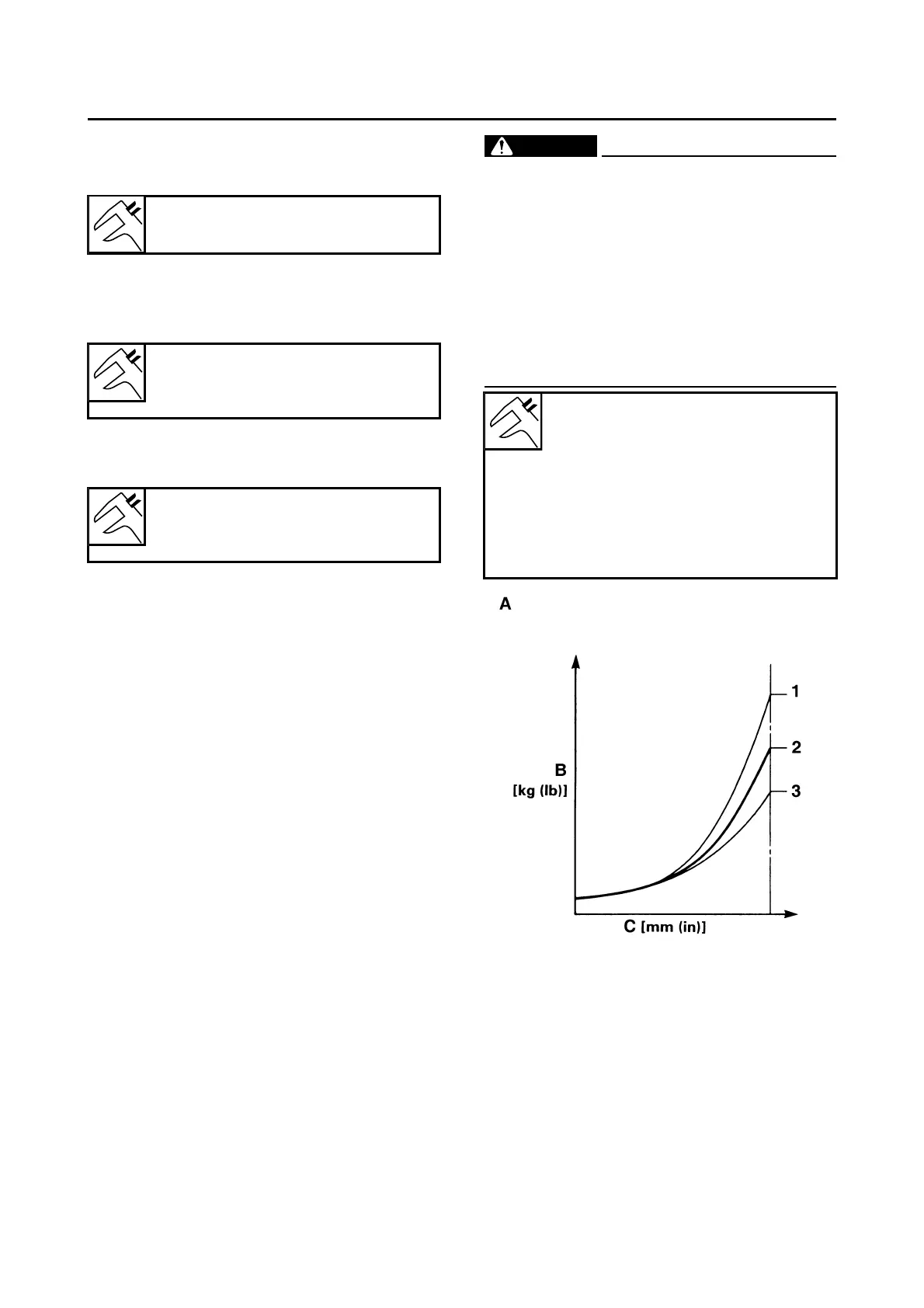CHASSIS
10-2
EAS1SM5370
TIRE PRESSURE
Tire pressure should be adjusted to suit the
road surface condition of the circuit.
• Under a rainy, a muddy, a sandy, or a slippery
condition, the tire pressure should be lower
for a larger area of contact with the road sur-
face.
• Under a stony or a hard road condition, the
tire pressure should be higher to prevent a flat
tire.
EAS1SM5371
FRONT FORK SETTING
The front fork setting should be made depend-
ing on the rider’s feeling of an actual run and
the circuit conditions.
The front fork setting includes the following
three factors:
1. Setting of air spring characteristics
• Change the fork oil amount.
2. Setting of spring preload
• Change the spring.
3. Setting of damping force
• Change the compression damping force.
• Change the rebound damping force.
The spring acts on the load and the damping
force acts on the cushion travel speed.
EAS1SM5372
CHANGE IN AMOUNT AND CHARACTERIS-
TICS OF FORK OIL
Damping characteristic near the final stroke
can be changed by changing the fork oil
amount.
EWA1DX4001
Adjust the oil amount in 5 cm
3
(0.2 US oz,
0.2 Imp.oz) increments or decrements. Too
small oil amount causes the front fork to
produce a noise at full rebound or the rider
to feel some pressure on his hands or body.
Alternatively, too large oil amount will
cause the air spring characteristics to have
a tendency to be stiffer with the consequent
deteriorated performance and characteris-
tics. Therefore, adjust the front fork within
the specified range.
Standard tire pressure
100 kPa (1.0 kgf/cm
2
,15 psi)
Extent of adjustment
60–80 kPa (0.6–0.8 kgf/cm
2
, 9.0–
12 psi)
Extent of adjustment
100–120 kPa (1.0–1.2 kgf/cm
2
,
15–18 psi)
Standard oil amount
335 cm
3
(11.33 US oz, 11.82
lmp.oz) (USA) (CAN)
355 cm
3
(12.00 US oz, 12.52
lmp.oz) (EUR) (JPN) (AUS) (NZL)
(ZAF)
Extent of adjustment
300–365 cm
3
(10.14–12.34 US
oz, 10.58–12.87 Imp.oz)
A. Air spring characteristics in relation to oil
amount change
B. Load
C. Stroke
1. Max. oil amount
2. Standard oil amount
3. Min. oil amount

